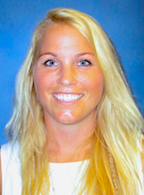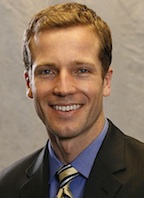Transitions of Care and Handoffs Policy
The following UCSF, Department of Radiation Oncology Residency Training Program Transitions of Care and Handoffs policy is consistent with the ACGME and UCSF GME Transitions of Care and Handoffs policy. This policy reflects the heightened awareness of the effects of handoffs (hand-overs) on patient safety and education; explains the system(s) designed; explains the process for ensuring competency for residents and clinical fellows; and explains how the efficacy of handoffs is monitored.
Radiation Oncology clinical assignments are designed to minimize the number of transitions in patient care. In order to successfully minimize transitions in patient care the Program:
- Instructs faculty to role model effective handoffs. Each Attending Physician sees every patient weekly for an “on treatment” assessment. In anticipation of an absence by the Attending Physician a box is checked documenting that “patient hand-off” has been accomplished. The current status of the patient is documented in the Lantis/Mosaiq electronic medical record and a sign-out sheet is provided to the covering faculty member AND to the resident on the service. Prior to any planned leave by an Attending Physician a leave slip is filled out by the Attending, submitted to the Chair for approval, and then submitted to the departmental schedulers. The Attending’s leave is documented in the electronic schedule/medical record (Lantis/Mosaiq), his/her clinic schedule is blocked off, and the covering Attending Physician is documented.
- Requires resident participation in generating the rotation schedule for the following academic year, a process that is coordinated by the Chief Residents and supervised by the Program Director.
- Has overarching principles and policies to ensure continuity of care, participation of residents in all phases of each patients care and the highest quality of patient care.
- Schedules clinical rotations in blocks of three months, whenever possible. One of the three months may be used as elective time; however, two consecutive months of clinical service is the minimum acceptable block in any rotation.
- Refrains, whenever possible, from assigning PGY-2 residents (first year Radiation Oncology residents) to services in which there is a new faculty member from an outside institution who is joining the department during the months of July, August or September.
- Requires the rising Chief Residents to submit a draft of a rotation schedule to the Residency Program Director no later than May 1st of the academic year prior to their Chief year. This draft is reviewed by the Program Director and Department Chair. A final schedule is submitted to the Program Director and Program Coordinator no later than June 1st of that year.
- Requires residents to submit all vacation, meeting and other planned leave to their respective Attending Physician. Departmental policies require that Residents complete and sign a House staff Leave Request Slip when requesting any type of leave at least one month prior to the dates they are requesting. Residents obtain signatures from the Chief Resident first, then the Program Director. Residents forward the completed leave slip to the Program Coordinator who records it against the Residents leave balance. Residents assign another House staff member to cover their patient load during their absence. Coverage for simulations is assigned by the Chief Resident. Residents send an email to the department informing the entire departmental staff of the dates of their leave and who will be covering their service in their absence. The Program thus makes faculty aware of the hazards of discontinuity and new regulations and best practices to ensure patient safety. The Attending Physician and the entire clinical staff are thus aware of any resident absence and of which resident is covering for the absent resident.
- Allows residents to have a maximum of five planned leave days during any clinical month.
- Requires Attending Physicians to be responsible for obtaining treatment consents, new patient consults, follow-up visits, prescriptions in Lantis/Mosaiq, and simulations (if the Chief Resident is unable to find resident coverage) during a resident’s planned leave.
- Requires residents to resume coverage of all prior patients on the service in addition to those patients seen during their leave upon return from the planned leave.
To ensure and monitor effective, structured hand-over processes that facilitates both continuity of care and patient safety with minimal interruptions, handoffs must include:
° Patient summary (exam findings, laboratory data, any clinical changes);
° Assessment of illness severity
° Active issues (including pending studies)
° Contingency plans (“If/then” statements)
° Synthesis of information (e.g. “read-back” by receiver to verify)
° Family contacts
° Any changes in responsible attending physician
° An opportunity to ask questions and review historical information
- Two days prior to a service / rotation transition AND one day prior to any scheduled leave, Residents must e-mail a formal, electronic sign out for their service to the incoming resident / covering resident for the service / rotation, the Attending Physician on the service, the Program Director and the Chief Resident. The resident vacating the service / rotation must also give a hard copy of their sign out to the incoming resident. Sign-out will also include a face-to-face or live phone conversation along with the resident’s required email in order to provide an opportunity for in-person clarification and questions.
- Faculty oversight of the handoff process may occur directly or indirectly, depending on trainee level and experience.
- To ensure residents and clinical fellows are competent in communicating with team members in the handoff process the following educational resources are available to each resident:
— “Bridging the Gap: Effective Handoffs for Safe Care”
› UCSF GME Grand Rounds (online): addresses handoff context and literature and UCSF- specific handoff policies and best practices
› Available on the GME website:
http://medschool.ucsf.edu/gme/grounds/index.html
— Handoffs and Signout Primer: Agency for Healthcare Research and Quality (AHRQ)
› A literature overview with links to case scenarios and expert discussion that can be used as teaching cases
› Available at:
http://psnet.ahrq.gov/primer.aspx?primerID=9
— Teaching Video: “Handoffs: A Typical day on the Wards”
› A peer-reviewed video on MedEdPORTAL that can be used as a trigger for teaching sessions on handoffs
› Available here:
https://www.mededportal.org/publication/8331
The program delivers focused and relevant training to each resident to build handoff skills. Training consists of an in-service and lecture to the faculty and residents by the Director of Quality and Safety Programs for GME.
The program evaluates and documents assessment of the interpersonal and communication skills competencies (handoff skills are a specific skill within these competencies) using:
° Direct Observation Evaluation
° Global Assessments of Interpersonal and
Communication Skills (includes specific items reflecting assessment of competence in the handoff process)
° Peer evaluation (includes specific items about both giving and receiving handoffs)
Schedules that inform all members of the health care team of attending physicians and residents currently responsible for each patient’s care are available on the department intranet
http://radonc.ucsf.edu/links/radonc_intranet.html.
These schedules are also e-mailed to all Clinical Staff members.
All clinical staff members have access to the monthly service list, the on-call physician schedule and the on-call therapists schedule via the department intranet
http://radonc.ucsf.edu/links/radonc_intranet.html.
These call schedules include pager numbers and home and or cell phone numbers and are posted at various department locations and are distributed throughout the department via e-mail. The call schedules include several back-up contact names and phone numbers that the resident utilizes in situations in which the resident’s clinical care needs exceed his/her ability.
• To assure that all details of patient coverage and handoff are communicated daily to all staff in the department, team members from Nursing, Dosimetry, Treatment Planning and Administration gather in the Treatment Planning area at 8:50 AM daily and provide a brief report for each section. The report includes all of the following information:
› Staff who are out of clinic
› Attending Physicians who are out of clinic and the covering Attending Physician.
› Resident Physicians who are out of clinic and the covering Resident Physician.
› Number of New Patients
› Number of Follow-ups
› Which Attending/Resident teams are seeing their On-Treatment patients that day
› Number of special procedures
› Machine Status
› Computer issues
› Additional special issues such as patients who are inpatients, patients who are arriving to clinic via ambulance, forensic patients. This information is compiled into a daily report that is emailed to the entire Clinical Staff every morning.


